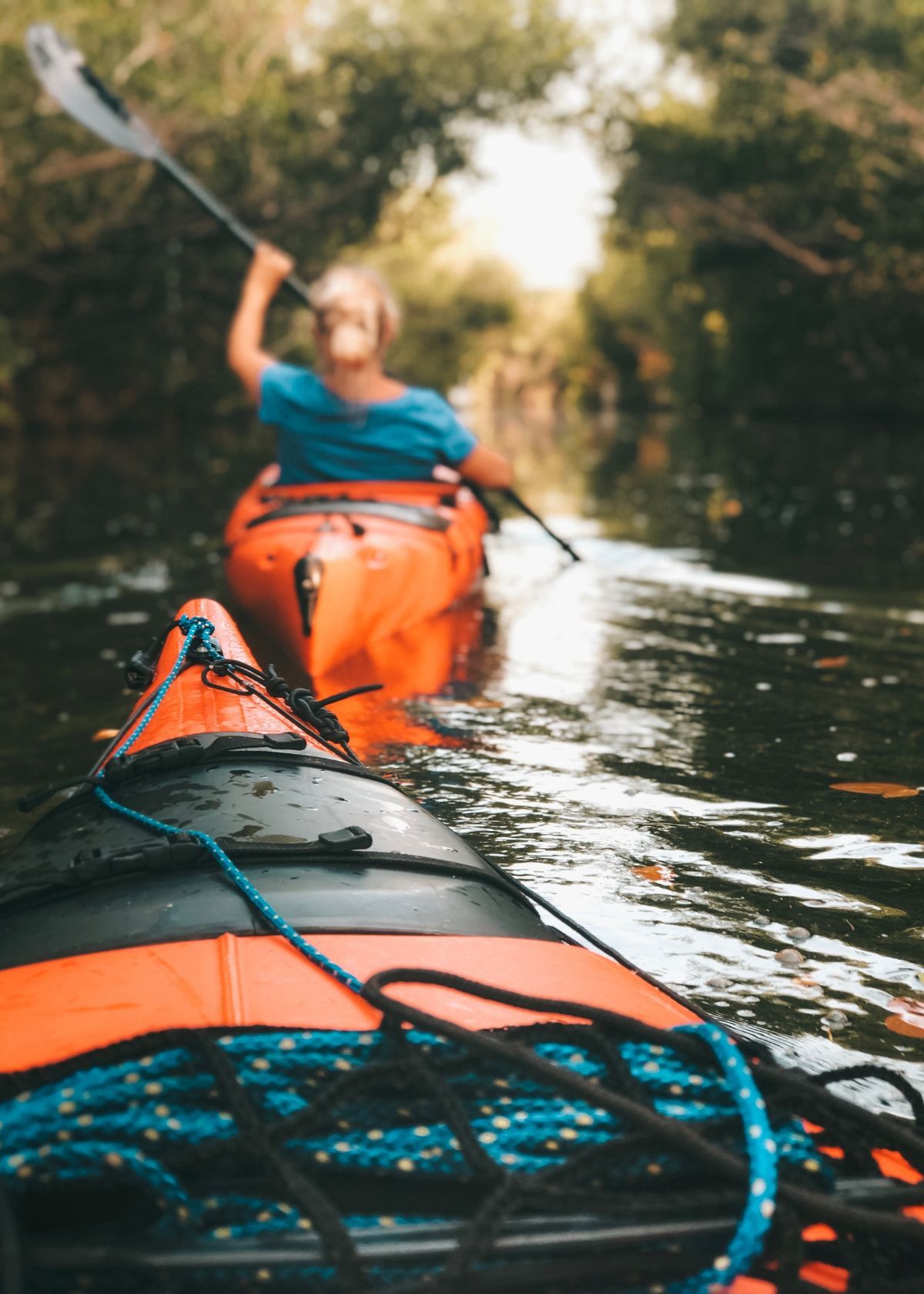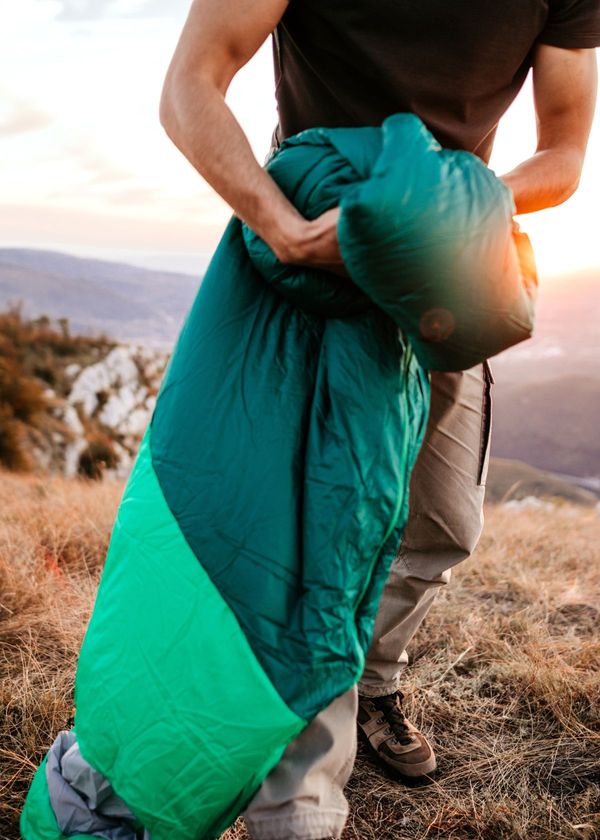Embarking on a journey across serene waters, a kayak promises a gateway to an immersive world of tranquility and adventure. Whether you're a seasoned paddler or a curious novice, the art of getting into a kayak unveils a thrilling realm of possibilities. Picture this: you stand at the water's edge, the kayak beckoning like a loyal companion, ready to carry you into uncharted territories. But how does one gracefully step into this vessel and unleash their inner explorer?
To begin this aquatic dance, envision yourself as an agile ballet dancer, preparing to execute a flawless leap. As you approach the kayak, its sleek form glimmers in anticipation, awaiting your arrival.
Gently placing one foot in the center, you stabilize the sit-on-top kayak, feeling the cool touch of water against your skin. With measured grace, lower yourself into a squatting position, allowing your weight to distribute evenly across the hull.
In this guide, we will delve deeper into the art of embarking on a kayak adventure, unveiling techniques that allow you to enter this aquatic realm with confidence and finesse. So, gear up, embrace the water's embrace, and let us unlock the secrets of how to get in a kayak, one stroke at a time.
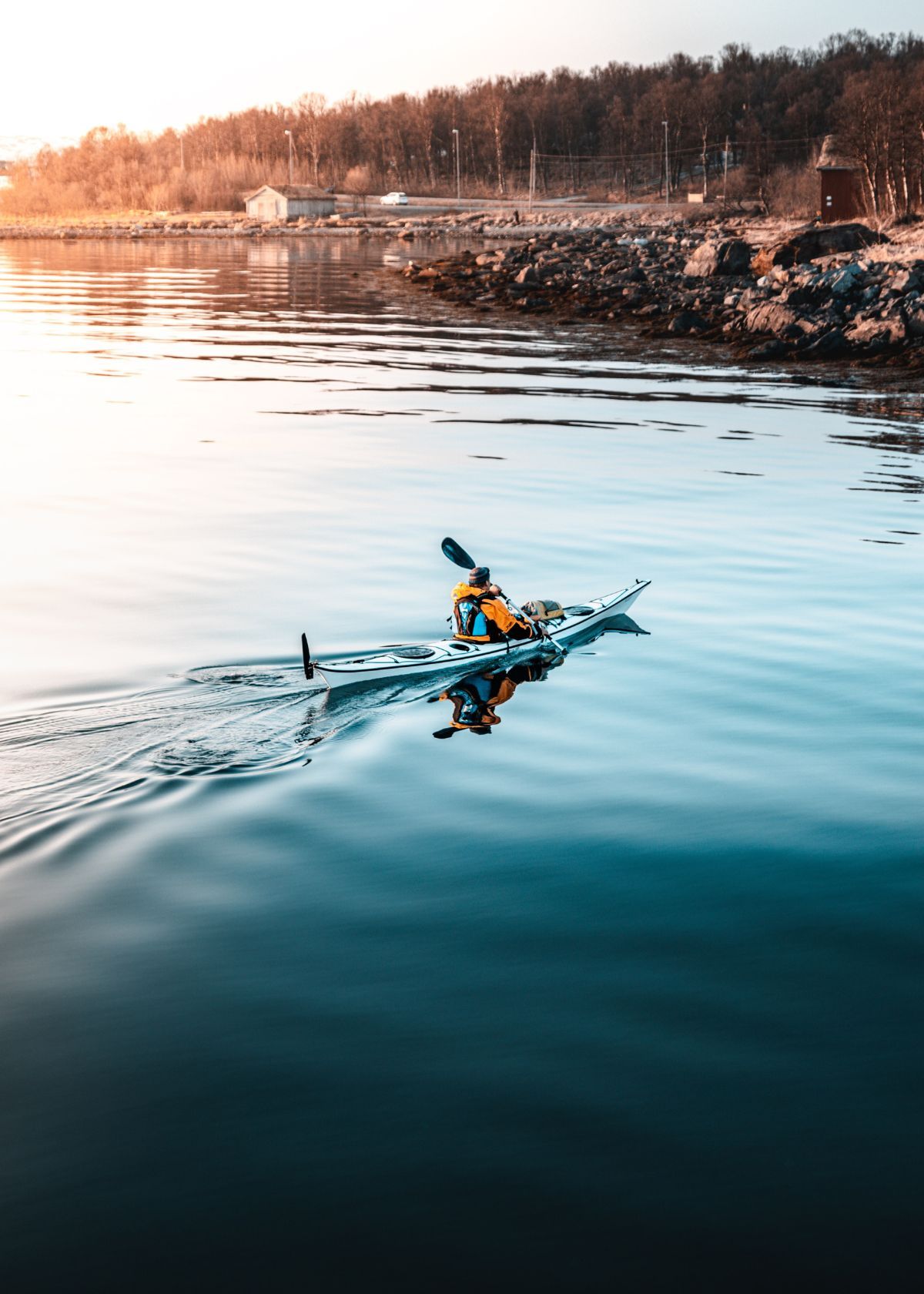
The Synchronized Launch To Get In A Kayak
Embarking on a kayaking adventure can be an exhilarating experience, but one often overlooked aspect is the synchronized launch. The synchronized launch involves a carefully coordinated effort to get in a kayak smoothly and efficiently, ensuring a safe and enjoyable start to your journey.
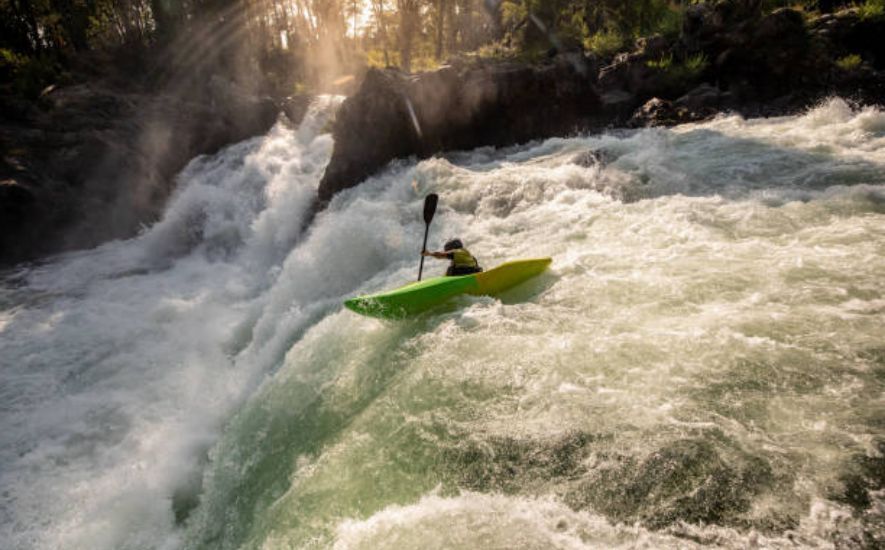
I. Choosing the Right Location:
Finding the perfect spot to launch your kayak sets the stage for a successful synchronized launch. Look for a calm and shallow area with easy access to the water. Smooth, sandy beaches or gently sloping riverbanks are ideal. Ensure there are no obstacles or hazards nearby that could impede your launch.
II. Gathering the Gear:
Before attempting a synchronized launch, it's crucial to gather all the necessary gear. Ensure you have your kayak, paddle blade, personal flotation device (PFD), and any additional equipment such as dry bags or navigation aids. Organize your gear in a way that allows for easy access and ensures nothing gets left behind.
III. Preparing the Kayak:
Properly preparing your kayak before the synchronized launch can significantly impact your overall experience. Start by ensuring the kayak is positioned parallel to the waterline, with the bow pointing towards the water.
Check that the seat and footrests are adjusted to your comfort, and that any hatches or compartments are securely closed.
IV. Team Coordination:
The essence of a synchronized launch lies in coordination and communication. If you are launching with a partner or a group, establish a plan of action beforehand.
Designate a launch leader who will guide the process and ensure everyone is in sync. Clearly communicate the steps and signals to be used, ensuring everyone understands their roles.
V. Entering the Kayak:
The synchronized launch begins with entering the kayak smoothly and safely. Start by positioning the kayak parallel to the water's edge, ensuring it remains stable. With your paddle resting behind the cockpit, grip the cockpit rim with both hands and slowly lower yourself onto the seat, keeping your weight centered. Slide your feet into the footrests, maintaining balance and stability.
VI. Launching with Precision:
It's time to launch in synchrony once everyone is comfortably seated in their kayaks. The launch leader should give a clear signal, such as a whistle or a verbal cue, indicating that it's time to push off.
Everyone should simultaneously push away from the shore, using their paddles or hands, and begin paddling in unison. Remember to maintain proper form and follow the predetermined route.

The Dock Side Slide Way For Kayaking
Imagine a serene morning by the water's edge, where the sun's gentle rays dance upon the shimmering surface. The air is filled with anticipation as you prepare to embark on a kayaking adventure.

But before you paddle away, mastering the art of the dockside slide is crucial. This graceful maneuver allows you to effortlessly enter your kayak, ensuring a smooth and enjoyable journey on the water.
I. Preparing for the Slide
Before attempting the dockside slide, it is important to take a few preliminary steps to ensure your safety and comfort.
Choose the Right Location: Find a dock or platform that provides stability and enough space to maneuver around your kayak. A sturdy and well-maintained dock will ensure a solid foundation for your entry.
Gather Your Gear: Make sure you have all your kayaking essentials within reach. This includes your paddle, personal flotation device (PFD), spray skirt (if needed), and any additional equipment you may require.
II. Proper Foot Placement
To execute a flawless dockside slide, mastering the art of foot placement is paramount.
Positioning the Kayak: Place your kayak parallel to the dock, ensuring its stability. Ideally, the kayak should be close enough to the edge to allow for an easy transition but not so close that it risks drifting away.
Stable Stance: Stand with your feet shoulder-width apart and distribute your weight evenly. This will provide a solid base for the sliding motion and enhance your balance.
III. Sliding into the Kayak
With the groundwork laid, it's time to gracefully slide into your kayak.
Sit on the Edge: Gently lower yourself onto the edge of the kayak, placing one foot inside and the other outside. Keep your knees slightly bent, allowing for flexibility and ease of movement.
Sliding Motion: Using a smooth and controlled motion, gradually slide your buttocks toward the seat while simultaneously swinging your legs inside the kayak. This fluid movement minimizes the risk of tipping and maintains your equilibrium.
Finding Stability: Once seated in the kayak, center your body weight and ensure a balanced posture. Adjust the foot pegs or footrests to fit your leg length, allowing for optimal comfort and control.
IV. Safety First
While the dockside slide is a beautiful technique, safety should always be a top priority. Remember these key safety tips before setting off on your kayaking adventure:
Wear a Personal Flotation Device: Ensure that you have a properly fitted PFD and wear it at all times while on the water. This essential piece of equipment can be a lifesaver in case of an unexpected capsize.
Know the Water Conditions: Stay informed about the current weather and water conditions. Check for any potential hazards or warnings before setting out, and adjust your plans accordingly.
Develop Your Skills: Before attempting more challenging kayaking adventures, hone your skills in calmer waters. Practice paddling techniques, bracing, and self-rescue maneuvers to build confidence and enhance your safety on the water.
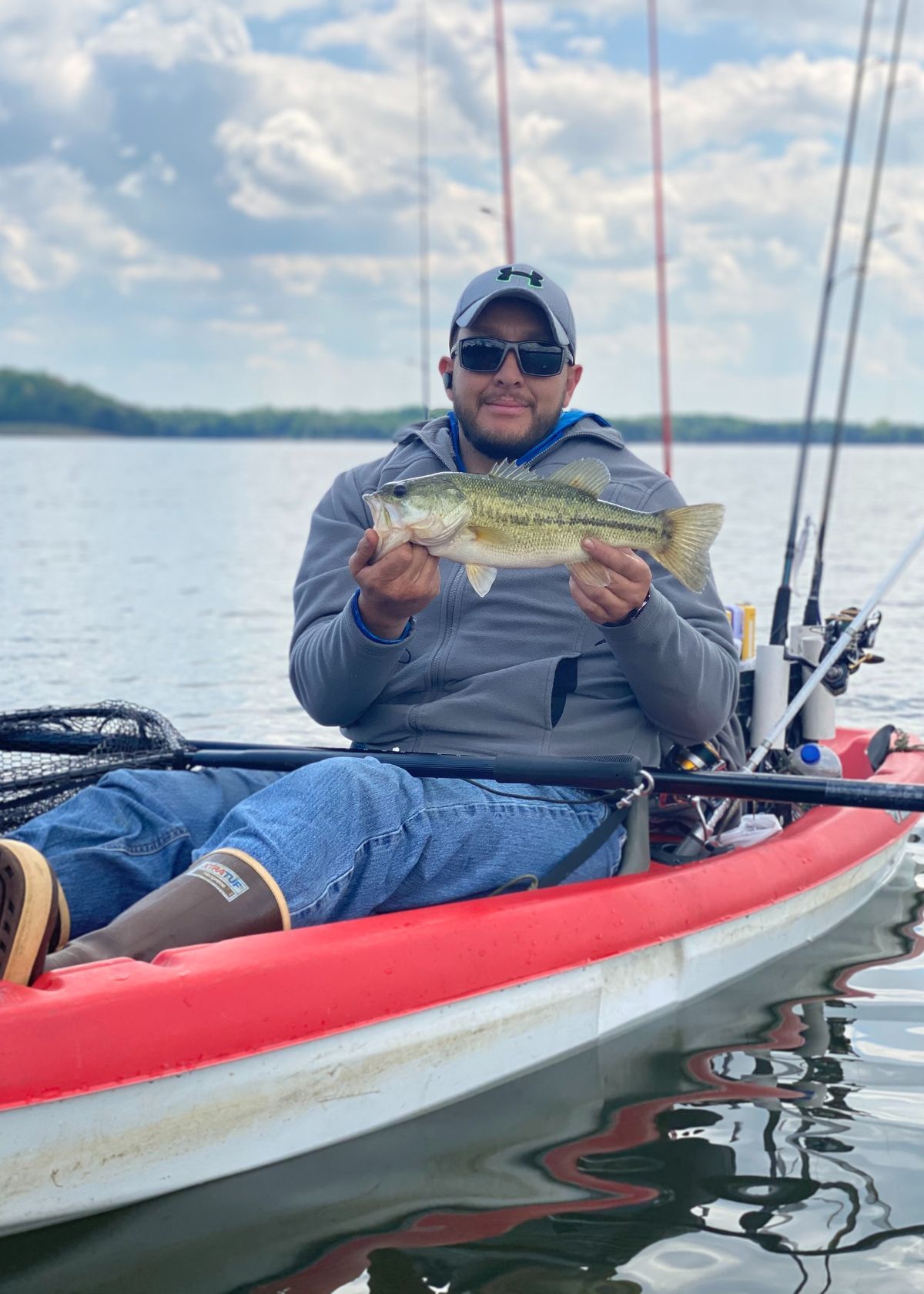
The Beachside Shuffle
Welcome to the thrilling world of kayaking! If you find yourself by the beach, ready to embark on an adventure, mastering the art of the beachside shuffle is essential. This unique technique will help you smoothly and gracefully launch your kayak into the water, allowing you to confidently set off on your paddling journey.
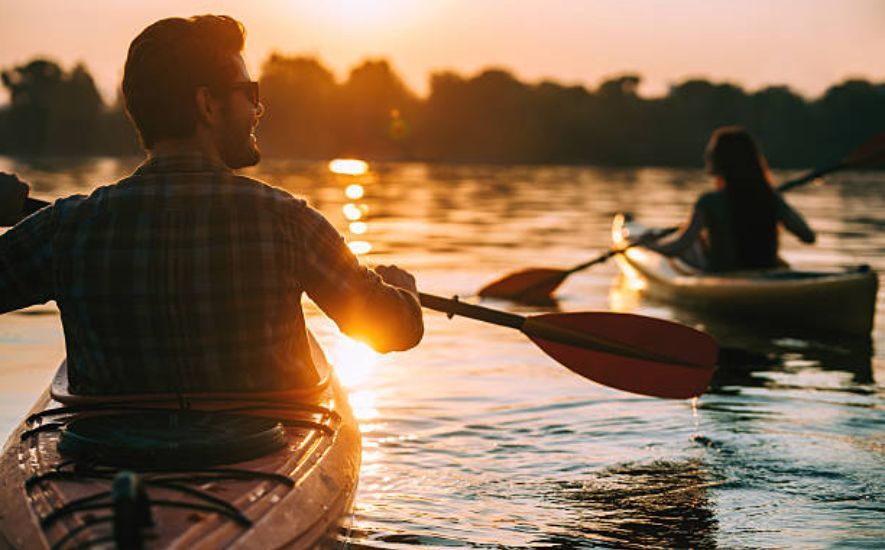
Selecting the Perfect Spot:
Before you begin your beachside shuffle, scout the shoreline for the ideal location to launch your kayak. Look for a stretch of sandy beach with minimal rocks or obstacles, allowing for a smooth transition into the water. Additionally, keep an eye out for any signs indicating restricted areas or potential hazards.
Gear Check and Preparation:
Once you've found your launch spot, it's time to ensure you have all the necessary gear and perform a thorough equipment check. Confirm that your kayak is in proper working condition, including checking for any damage or leaks. Gather your personal flotation device, paddle, and any additional gear required for your adventure.
Positioning the Kayak:
With your gear in order, position your kayak parallel to the shoreline, with the bow facing the water. Ensure the kayak is resting on a flat surface, allowing it to remain stable during the shuffle.
The Sideways Slide:
Stand at the rear of your kayak, facing the water, and place your paddle across the kayak, just behind the seat. With your hands on either side of the paddle, gently lift and tilt the kayak towards you, allowing the stern to slide sideways towards the water. As you slide the kayak, keep a firm grip on the paddle, using it as a stabilizer.
Gravity-Assisted Launch:
Once the stern of the kayak reaches the water, the next step is to utilize the power of gravity for a smooth launch. Hold onto the paddle with one hand and release your grip on the kayak, allowing it to slide naturally into the water. As the kayak floats, maintain your hold on the paddle to prevent it from drifting away.
Stepping into Adventure:
Now that your kayak is afloat, it's time to embark on your kayaking adventure. Carefully step into the kayak, placing one foot at a time while maintaining your balance. Sit down in the kayak, adjusting the seat and footpegs if necessary, to ensure a comfortable and secure fit.
Ready to Paddle:
With the beachside shuffle complete and you comfortably seated in your kayak, it's time to grab your paddle and start exploring the waterways. Begin your strokes, propelling yourself forward, and revel in the tranquility and beauty that kayaking offers.
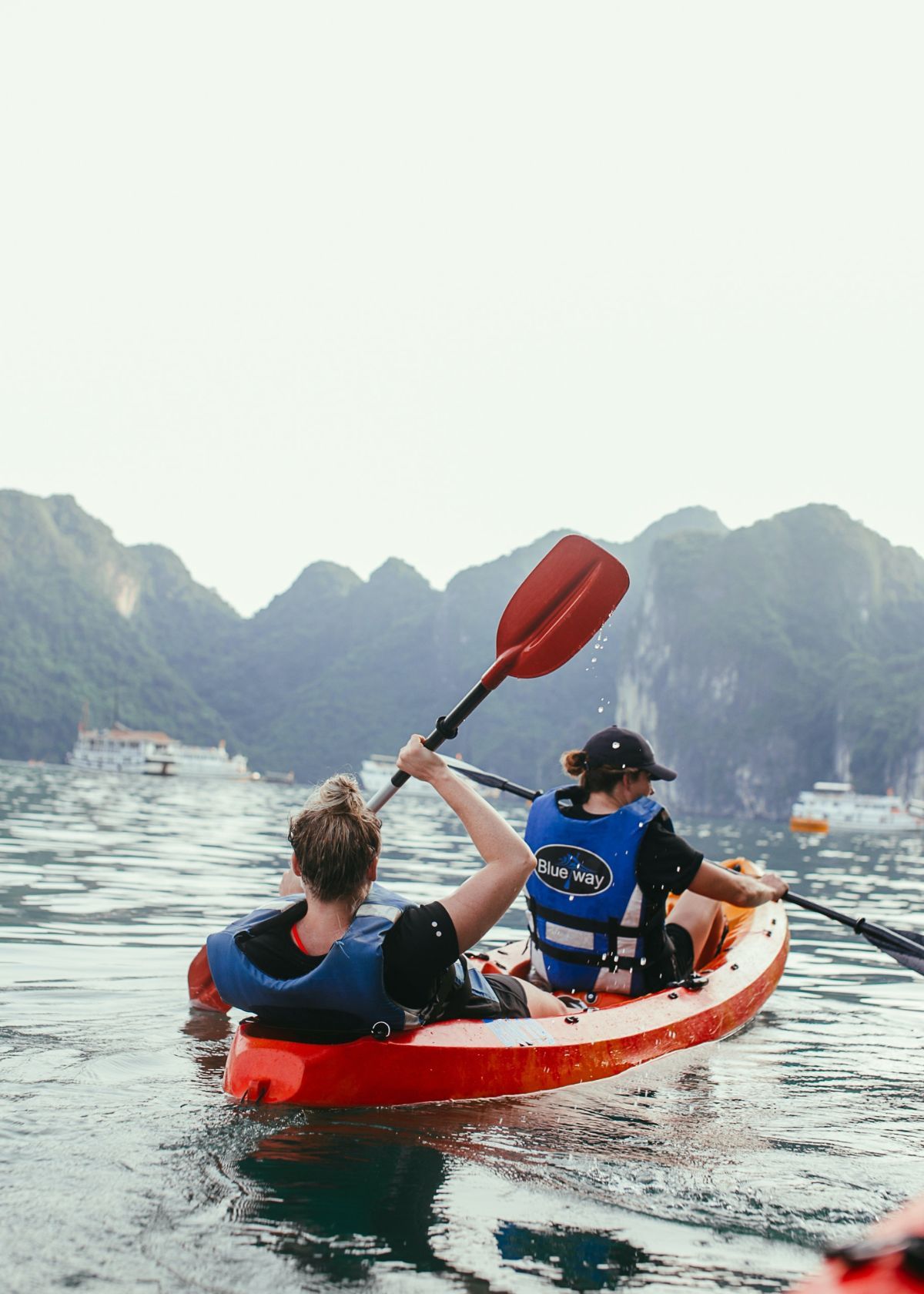
Frequently Asked Questions (How To Get Into A Kayak)
Welcome to the FAQ guide on how to get into a kayak! Whether you're a beginner or have some experience with kayaking, knowing the proper technique to enter a kayak is essential for a safe and enjoyable paddling experience.
How do you get in a sit on kayak?
Getting in and sitting on a kayak can be a straightforward process with the right technique. Here's a step-by-step guide:
Find a suitable launching spot: Look for a calm and shallow area with easy access to the water. This could be a sandy beach or a dock.
Position the kayak: Place the kayak parallel to the shore or the dock, ensuring it is stable and won't tip over.
Straddle the kayak: Stand beside the kayak, facing the cockpit. Keep your feet shoulder-width apart and position yourself so that you are straddling the kayak with one leg on each side.
Lower yourself onto the seat: Slowly and steadily lower your bottom onto the seat, maintaining your balance throughout the process. Hold onto the kayak's sides for added stability.
Slide into the cockpit: While sitting on the seat, extend your legs forward and place your feet inside the cockpit. Ensure your feet are comfortably positioned on the footrests or braces, if available.
How hard is it to get into kayaking?
Getting into kayaking can vary in difficulty depending on various factors such as your physical fitness, previous experience with water sports, and the type of kayaking you choose. However, with the right mindset and approach, kayaking can be an enjoyable activity for people of various skill levels. Here's a breakdown of the different aspects to consider:
Physical fitness: Basic kayaking doesn't require exceptional fitness levels, but having a reasonable level of strength and endurance can enhance your experience. Regular exercise and conditioning can help improve your paddling stamina and make it easier to maneuver the kayak.
Skill acquisition: Learning the fundamentals of kayaking, such as proper paddling technique, balance, and navigation, may take some time and practice. However, many beginners find it relatively easy to grasp the basics and progress quickly with guidance or lessons from experienced kayakers.
Safety considerations: Understanding safety protocols and learning rescue techniques are crucial aspects of kayaking. While it's not overly complicated, acquiring these skills is essential to ensure your safety on the water. Taking a beginner's course or joining a kayaking club can provide valuable knowledge and support in this regard.
How do you get on a kayak in the ocean?
Getting on a kayak in the ocean requires some additional considerations due to the dynamic nature of the environment. Here are the steps to safely get on a kayak in the ocean:
Choose a suitable launch spot: Look for a beach area with gentle waves and minimal currents. Avoid areas with strong surf or hazardous conditions that may make it difficult to get in or out of the kayak.
Time your entry: Watch the waves and aim to launch during a lull in the wave action. This will make it easier to get on the kayak without being knocked off balance by breaking waves.
Hold the kayak steady: If you have assistance, have someone hold the kayak stable in the water while you prepare to get on. If you're alone, position the kayak so that it's parallel to the shoreline, and the bow is facing the ocean.
Straddle the kayak: Stand beside the kayak in shallow water, facing the cockpit. Keep your feet shoulder-width apart and straddle the kayak with one leg on each side.
Lower yourself onto the seat: Slowly sit down on the kayak's seat while maintaining your balance. Place your hands on the back of the cockpit for added stability.
Conclusion - Ways To Enter And Exit A Kayak In Deep Water
In conclusion, learning how to get in a kayak is a straightforward process that can be mastered with practice and proper technique. By following the steps outlined in this guide, individuals can ensure a safe and efficient entry into the kayak. Remember to approach the kayak from a stable surface, maintain a balanced stance, and use your paddle's or a dock's support for stability.
With patience and experience, getting in a kayak will become second nature, opening up a world of adventure and exploration on the water. So grab your paddle, embrace the learning process, and enjoy the thrilling experience of kayaking.



